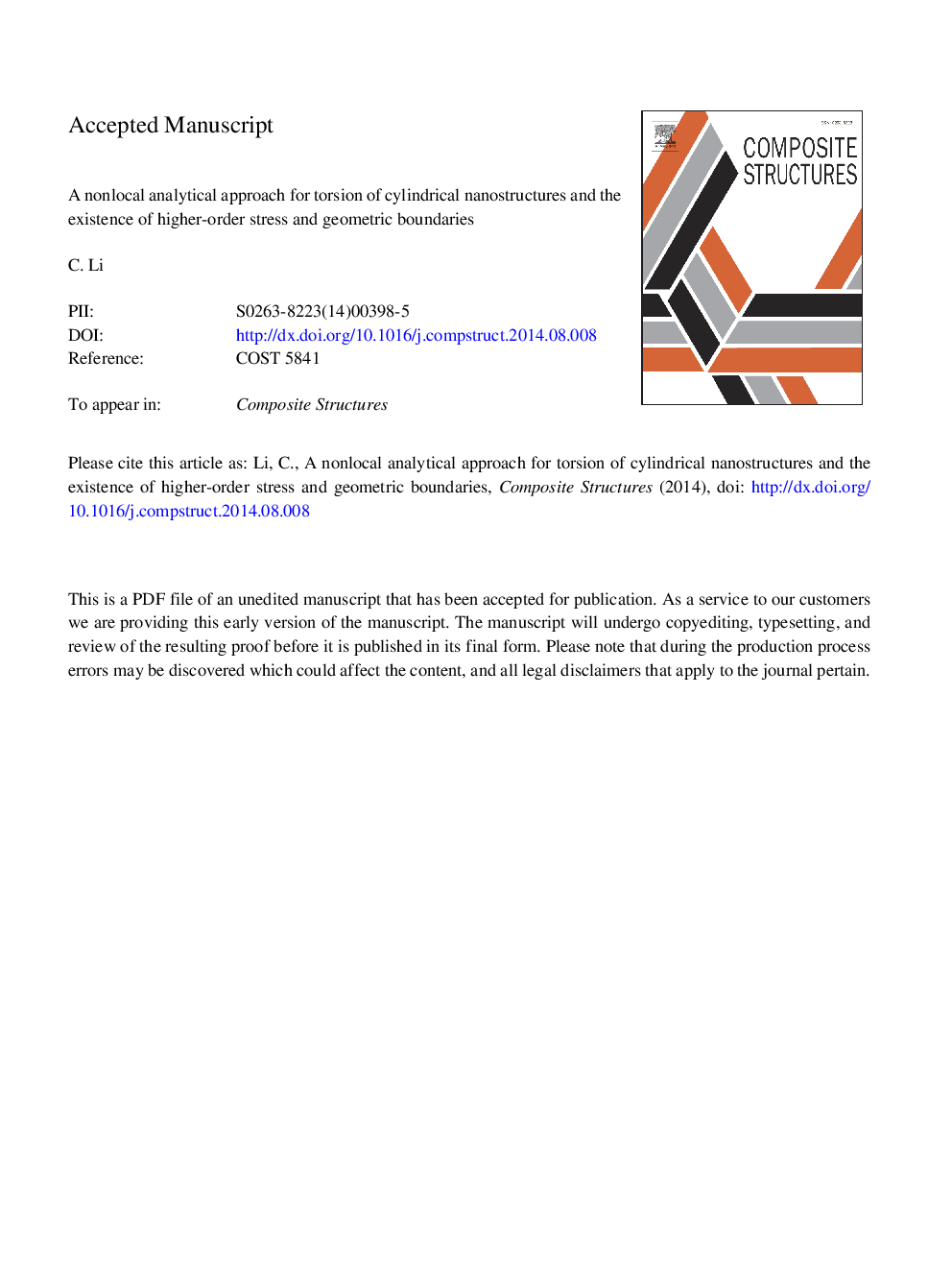| Article ID | Journal | Published Year | Pages | File Type |
|---|---|---|---|---|
| 6707706 | Composite Structures | 2014 | 47 Pages |
Abstract
A new analytical approach considering the effective nonlocal shear stress field is proposed and subsequently the torsion of cylindrical nanostructures, such as nanorods, nanoshafts, and/or nanotubes is investigated. The analytical solutions and torsional characteristics of such nanostructures subjected to an external end torque or distributed torques are established based on the Eringen's gradient type of nonlocal elasticity theory. For bending, buckling and vibration, it has been proved that the classical equations of equilibrium and/or equations of motion could not be applied to nonlocal nanostructures directly unless the stress and moment quantities in classical equations are replaced by the corresponding effective nonlocal quantities. The work is extended to derive the governing equations here via the variational principle and effective nonlocal stress theory for torsion of cylindrical nanostructures for the first time. A new strain energy density expression with higher-order nonlocal shear strain gradients and a nonlocal nanoscale parameter is established in detail, alongside the corresponding generalized non-classical stress and geometric boundary conditions. The effective nonlocal twisting moment is proposed for torsion deformation for the first time. A few benchmarked examples are solved and the analytical solutions for specific cases of interest demonstrate that the maximum angular deformation for static twist decreases with an increase in the nonlocal nanoscale parameter, or the torsion rigidity of nonlocal nanostructures tends to harden when the effective nonlocal effects are considered. The effective nonlocal torsional solutions obtained are compared with the classical and previous softening nonlocal solutions to reveal the significant effects of additional higher-order nonlocal boundary conditions. The nanostructural enhancement effect derived here is consistent with some other existing approaches including the strain gradient elasticity theory and the modified couple stress theory.
Related Topics
Physical Sciences and Engineering
Engineering
Civil and Structural Engineering
Authors
Cheng Li,
